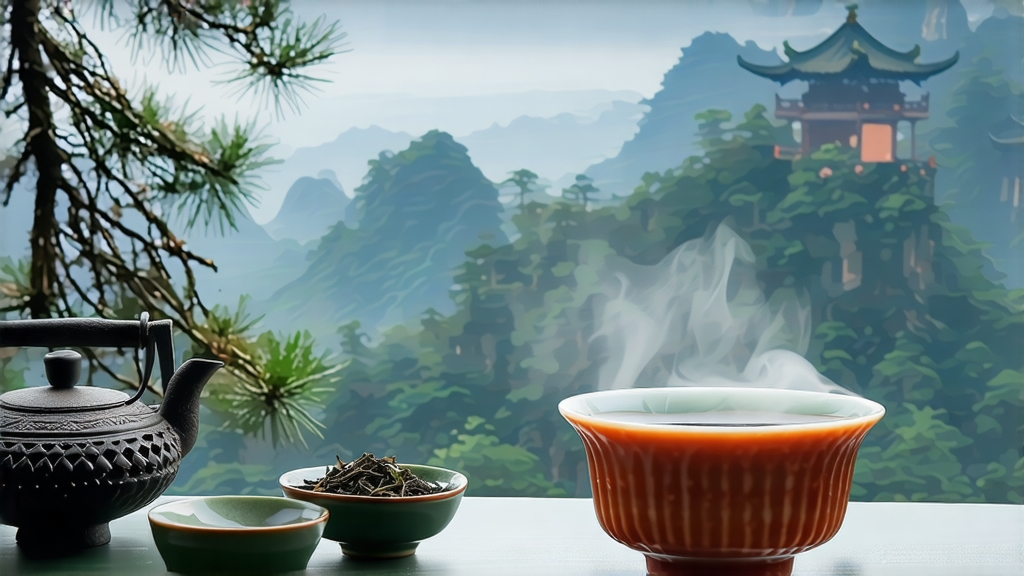
Long before English breakfast blends and afternoon tea services, a single leaf from the Wuyi Mountains of northern Fujian set sail on the Amoy trade route and rewrote the global palate. That leaf was Lapsang Souchong—today the oldest recorded black tea in history, yet still the most polarizing cup on any serious tasting table. To understand it is to hold a mirror to four centuries of commerce, craft, and cultural translation.
-
From Song to Smoke: a Brief History
In local Minbei dialect “souchong” means “small sort,” the downy third or fourth leaf picked after the prized buds. During the late Ming dynasty, legend claims passing armies delayed the usual green-tea processing in Tongmu village; eager to save the crop, farmers rushed the withered leaves over open pine fires. The resulting crimson liquor traveled south to the port of Xiamen, where Dutch buyers christened it “bohea” (a corruption of “Wuyi”) and shipped it to Amsterdam in 1604. By the early Qing, Catherine of Braganza’s dowry had carried the taste for smoked tea to the English court, and London coffeehouses were already sweetening it with sugar and milk. Thus Lapsang Souchong became the prototype for every black tea that followed, while its own name gradually narrowed to designate only the pine-smoked original. -
Terroir and Two Styles
Authentic Lapsang Souchong is protected by origin: the 680-meter-high National Nature Reserve that cradles Tongmu and its three hamlets—Marshes, Guadun, and Miaowan. Here subtropical mists, mineral-rich laterite soil, and day-night temperature swings of 15 °C concentrate amino acids in the leaves. Two styles now coexist. Traditional “smoked” Lapsang is withered over local Masson pine and Cyprus root fires, then pan-fired, rolled, oxidized, and finally hot-smoked again in wooden chambers above slow pinewood embers. The newer “unsmoked” or “craft” style omits the final smoking, aiming to showcase the honeyed, longan-fruit character that purists insist was always present beneath the resin. Both share the same cultivar—Xiao Ye Zhong (small-leaf bush)—but diverge in the last 24 hours of production. -
Craft in Five Acts
a. Picking: only the standard “two leaves and a bud” are taken after Qingming, when the spring leaf reaches 4–5 cm.
b. Withering: bamboo trays rest above pinewood hearths for 8–10 hours; the leaf loses 60 % moisture and absorbs aromatic volatiles—guaiacol and syringol—that later translate into signature campfire notes.
c. Rolling: 45 minutes of light pressure ruptures cells without shredding the leaf; oxidation enzymes are released while the pine smoke continues to drift underneath.
d. Oxidation: the leaf pile is covered with wet cloths in a 26 °C, 85 % humidity room for 3–4 hours, turning every 30 minutes until every edge turns chestnut.
e. Smoking or Baking: for traditional style, the leaf is spread on sieves 70 cm above glowing pinewood embers for 6–8 hours; temperature is kept below 80 °C to avoid scorching. Craft style bypasses smoke, using instead 120 °C charcoal baking for 20 minutes to lock in malt sweetness. -
Leaf Anatomy and Grading
Imperial grade demands jet-black, evenly twisted strips with golden tips and no stem. First-grade allows 5 % stem and lighter color; second-grade shows more variegation and a sharper smoke. Aroma should balance pine resin and dried longan; any creosote or kerosene taint indicates over-smoking or inferior fuel. The highest lots, reserved for domestic connoisseurs, are smoked only once and rest in cedar-lined chests for three months so the phenolic edges round into candied fruit. -
Brewing: Gongfu versus Western
Gongfu method (recommended for evaluation)- 5 g leaf in a 120 ml porcelain gaiwan
- 95 °C water, flash rinse to awaken
- 1st steep: 10 s—look for bright copper liquor, nose of pine sap and honey
- 2nd–4th steeps